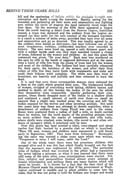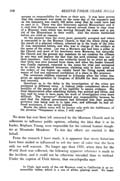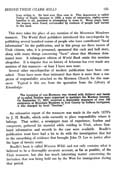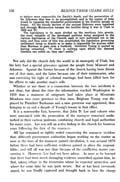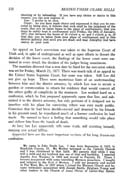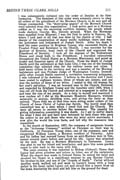
[p. 97]
MOUNTAIN MEADOWS MASSACRE
Contained in this chapter are all of the salient facts concerning the Mountain Meadows Massacre that a painstaking research upon the part of the author of this volume has been able to develop. No available source of information has been overlooked.
The mass murder of one hundred and forty-six people, comprising a caravan of emigrants from Carroll County to California, on the plains of Utah, in 1857, constitutes one of the blackest crimes that has ever stained the pages of American history. This episode is known as the Mountain Meadows Massacre.
Ever and anon weird stories concerning this collossal crime find their way into print. The lapse of ninety years has wiped little from memories of our people, nor has it done much to mitigate the feeling that the deed was a sin to be laid squarely at the door of the Mormon Church.
Only three accredited historians, so far as I have been able to find, have treated the subject at much length. Goodspeed's History of Northwest Arkansas devoted a good many pages to the subject. Only one edition of this history was printed, and very few copies are now in existence. Beadle's Tales of Western Wilds has been quite exhaustive upon the subject, and really speaks more authoritatively on many points than any of the rest. Bancroft's Utah is quite explicit as far as it goes, and is here quoted in full.
It is from these authorities that most of the matter containers in this chapter is based.
It was my privilege, soon after the turn of the old century, to interview Captain James Lynch, who was an army officer on the Indian frontier at the time the massacre occurred, and who was detailed to bring the surviving children back to their next of kin, as detailed in the rehearsal of events later on. At the time Captain Lynch called at my newspaper office in 1909 and gave me the story of his connection with the affair he was well past his three-score-and-ten, but his mind was still alert. Captain Lynch was regarded as the hero of the occasion, in that he not only had these children under his loving care, to see them back to their native heath, but he took an abiding interest in them;
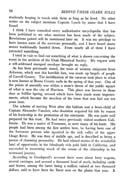
[p. 98]
studiously keeping in touch with them as long as he lived. No other writer on the subject mentions Captain Lynch by name that I have found.
I think I have consulted every authoritative encyclopedia that has been published to see what mention has been made of the subject. Revelations gained will be mentioned later on. It was my privilege to have known some of the survivors personally, and I have heard many stories traditionally handed down. From nearly all of these I have extracted something.
I tried in vain to find out something of what is shown concerning the event in the archives of the Utah Historical Society. My request with a self-addressed stamped envelope brought no reply.
As has been previously stated, the train of western emigrants from Arkansas, which met this horrible fate, was made up largely of people of Carroll County. The mobilization of the caravan took place in what is now known as Boone County early in the spring of that year. One of the points of assembly was within a stone's throw of the public square of what is now the city of Harrison. This place was known in those days as Stiffler Spring, around which have been made some improvements, which became the neucleus of the town that was laid out ten years later.
The scheme of moving West after this fashion was a brain-child of Captain Alexander Fancher, who doubtless acquired his title by reason of his leadership in the promotion of the enterprise. He was quite well prepared for this trust. He had twice previously visited southern California. He was a native of Tennessee, as were many of his hosts. His people had been among the first settlers here, he having been one of the fortunate persons who squatted in the rich valley of the upper Osage River. He was then of middle age, and is described as being a person of charming personality. He had related stories of the wonderful land of opportunity in the fabulously rich gold field in California, and succeeded in interesting much of the cream of the citizenship in his westward journey.
According to Goodspeed's account there were about forty wagons, several carriages, and around a thousand head of stock, including cattle and horses, among the latter being a stallion valued at two thousand dollars, said to have been the finest seen on the plains that year. It
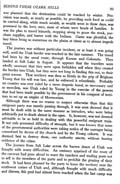
[p. 99]
was planned that the destination could be reached by winter. Provision was made, as nearly as possible, by providing such food as could be carried along, while much wealth, as wealth went in those days, was possessed by the forty men, most of whom were heads of families. It was the plan to travel leisurely, stopping along to graze the stock, purchase supplies, and barter with the Indians. Game was plentiful, the lazy bison being so numerous on the plains at times as to almost impede travel.
The journey was without particular incident, or at least it was going well, until the Utah border was reached in the late summer. The travel had been by the usual route, through Kansas and Colorado. They landed at Salt Lake in August. It appears that the travelers were wholly unaware that they were upon forbidden soil when they crossed the border into Utah, but they were not long in finding this out, to their great sorrow. That territory was then so firmly in the grip of Brigham Young that his will was law, and he enforced it relentlessly. Probably no country was ever ruled by a more despotic hand, so mercenary and so merciless, was Utah ruled by Young in the exercise of the powers that had been made possible by the government in his conquest of territory to set up an empire of Mormonism.
Although there was no reason to suspect otherwise than that this emigrant party was merely passing through, it was soon decreed that it must be dealt with in the same manner as intruders, who were being arbitrarily put to death almost in the open. It, however, was not deemed advisable to be so bold in dealing with this powerful emigrant train. It not only presented difficulty of strength, but it was known that some of the governmental authorities were taking notice of the outrages being committed by decree of the church and by the Young cohorts. It was deemed best to destroy them, one authority asserts, without leaving evidence of the crime.
The journey from Salt Lake across the barren desert of Utah was fraught with many difficulties. An emissary apprized of the route of the caravan had gone ahead to warn the ranchers and trading posts not to sell to the members of the party and to prohibit the grazing of their stock. It had been planned by the party to leave the territory near the southwest corner of Utah and, although fraught with much difficulty and distress, this goal had almost been reached when the last camp was
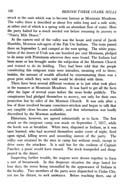
[p. 100]
struck at the oasis which was to become famous as Mountain Meadows. The valley there is described as about five miles long and a mile wide, at either end of which is a spring with an abundant flow of water. Here the party halted for a much needed rest before resuming its journey to "Ninety Mile Desert."
At the eastern end of the valley was the house and corral of Jacob Hamblin, Mormon sub-agent of the Pah Ute Indians. The train passed there on September 3, and camped at the west spring. The white population of the desert of Utah was one hundred per cent Mormons, pledged to do away with Protestants wherever they were found. The Indians had been more or less brought under the subjection of the Mormon Church and trained to do its bidding. They had been told that the people constituting this emigrant train were intruders, meaning evil to them; besides, the amount of wealth afforded by exterminating them was a great prize which they were told would be divided with them.
There have been several different versions as to just what took place in the massacre at Mountain Meadows. It was hard to get all the facts after the lapse of several years before the news broke publicly. The conspirators had pledged themselves to secrecy, not only for their own protection but by edict of the Mormon Church. It was only after a few of those involved became conscience-stricken and began to talk that any tangible clews became available; and that information was loudly discredited by the Mormon authorities.
Historians, however, are agreed substantially as to facts. The first attack on the emigrant camp was made on September 7, 1857, while the horde was at breakfast. White men, disguised as Indians, as it was later learned, who had secreted themselves under cover of night, fired upon signal, killing seven and wounding sixteen of the party. The volley was returned by the men in camp but without result, except to drive away the attackers. It is said but for the coolness of Captain Fancher, a panic would have ensued. The stock stampeded and disappeared in the desert.
Suspecting further trouble, the wagons were drawn together to form a sort of breastwork. In this desperate situation the siege lasted for four days, the terror being intensified by the appearance of Indians in the locality. Two members of the party were dispatched to Cedar City, not too far distant, to seek assistance. Before reaching there, one of
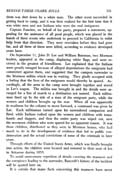
[p. 101]
them was shot down by a white man. The other scout succeeded in getting back to camp, and it was then realized for the first time that it was white men and not Indians who were the real instigators.
Captain Fancher, on behalf of his party, prepared a statement, appealing for the assistance of all good people, which was placed in the hands of three scouts who undertook to proceed to California to enlist help from that direction. They were overtaken before they had gone far, and all three of them were killed, according to evidence developed years later.
On September 11, John D. Lee and William Bateman, two Mormon leaders, appeared at the camp, displaying white flags, and were received in the greatest of friendliness. Lee explained that the Indians were greatly enraged because of alleged depredations the emigrants had committed against them, and suggested that the campers surrender to the Mormon militia which was in waiting. They gladly accepted with a feeling that the lives of the emigrants would thereby be spared. Accordingly, all the arms in the camp were brought together and stored in Lee's wagon. The militia was brought in and the details were arranged for a line of march to a destination not named. Each militiaman lined up by the side of a man of the emigrant party, while the women and children brought up the rear. When all was apparently in readiness for the column to move forward, a command was given by Lee. Each militiaman turned upon his surrendered companion and fired, while Indians rushed upon the women and children with tomahawks and daggers, and thus the entire party was wiped out, save the seventeen children who were spared for no apparent reason. It was those children, distributed as they were in Mormon homes, who had much to do in the development of evidence that led to public condemnation and the actual convictions of some of the criminals in later years.
Through efforts of the United States Army, which was finally brought into action, the children were located and restored to their next of kin in Arkansas during 1859.
To avoid unnecessary repetition of details covering the massacre and the conspiracy leading to the surrender, Bancroft's history of the incident will he quoted later on.
It is certain that many facts concerning this massacre have never
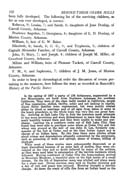
[p. 102]
been fully developed. The following list of the surviving children, so far as was ever developed, is correct:
Rebecca, 9; Louisa, 7; and Sarah, 4; daughters of Jesse Dunlap, of Carroll County, Arkansas.
Prudence Angeline, 7; Georgiana, 4; daughters of L. D. Dunlap, of Marion County, Arkansas.
William, 4; heir of G. W. Baker.
Elizabeth, 8; Sarah, 6; C. C., 9; and Tryphenia, 5; children of Captain Alexander Fancher, of Carroll County, Arkansas.
John, 9; Mary, 7; and Joseph, 4; children of Joseph M. Miller, of Crawford County, Arkansas.
Milam and William, heirs of Pleasant Tackett, of Carroll County, Arkansas.
F. M., 4; and Saphronia, 7; children of J. M. Jones, of Marion County, Arkansas.
In order to keep in chronological order the discussion of events pertaining to the massacre, here follows the story as recorded in Bancroft's History of the Pacific States:
In the spring of 1857 a party of 136 Arkansans, augmented by a few Missourians, set forth from Northern Arkansas for southern California. They were of the class badly needed in California, people of fine reputation, skilled, thrifty, sober and not lacking in capital. About thirty families were represented, but were mostly related either by blood or marriage and of all ages from babes in arms to the hoary grandsire, so the whole train was very like one great family. Arriving at Salt Lake in July the travelers made attempts to buy more provisions and were disheartened to learn that there was much hostility toward them and they were unable to make any purchases. Leaving via a southern route out of Salt Lake, they found they were able to purchase some wheat at Cedar City and this wheat was ground at the mill of one John D. Lee, formerly commander of the fort at Cedar, and at the time Indian Agent and in charge of an Indian farm. By this time there were stories afloat about crimes and depredations allegedly committed by the emigrants, such as poisoning of wells and springs, abuse of women, killing of stock, etc.
While most of these stories were subsequently disproved, or at least discredited because of an utter lack of motive, they were circulated at the time and no doubt believed by many of the settlers, as they were used later in extenuation of the terrible incidents which followed. Moving southwest of Cedar City the home-seekers arrived at Mountain Meadows, a beautiful plain on the high banks of a small stream. On the 5th of September camp was pitched and plans made for a short rest. Divine services were held on Sunday morning and a day of rest and peace was enjoyed. Morning brought a terrible change. At dawn the crack of rifle fire from an Indian band on the
[p. 103]
hill and the spattering of bullets within the stockade brought consternation and death among the travelers. Hastily caring for the wounded and gathering all their arms and ammunition and fighting men within the circle of wagons the band valiantly stood siege for four days. On the morning of the fifth there appeared a wagon from the north bearing a detail from the Nauvoo Legion, hostilities ceased, a truce was declared and the soldiers from the Legion arranged (so they said) for the safe conduct of the besieged travelers to a ranch a number of miles away, provided they turn over all arms and ammunition and go as directed. This was readily agreed to, as the soldiers were hailed as deliverers—but here followed one of the most treacherous, ruthless, coldblooded murders ever recorded in history. The men were lined up, spaced a safe distance apart and with a soldier beside each one, they were marched toward a clump of trees, followed by the women and children. At just this place the command was given, "Do your duty." Each man was murdered on the spot by rifle in the hands of supposed deliverers and at the same time a burst of rifle fire from the clump of trees laid low the women and most of the children. The Indians had been carefully rehearsed for their party, the butchery of the women, and after their first volley of rifle fire they burst forth with tomahawks and clubs and made their hideous work complete. The white men then went to breakfast, ate heartily and joyfully and then returned to bury the dead.It is said that even those contemptible demons were sickened for a time at the sight which greeted their eyes. The bludgeoned bodies of women, stripped of everything worth taking, children beaten and stabbed to death, all this besides the bodies of the men for which they themselves were responsible. Quickly gathering their composure, these fiends dragged most of the bodies to a shallow ditch and scattered a small amount of earth over them—so small an amount that a slight rain washed away the covering and left the bodies exposed for the wolves and other prowling animals. Not until two years later was there any attempt at decent sepulchre, when a detachment of soldiers from Camp Floyd was sent to the scene. Bones were scattered from a radius of half a mile, no doubt carried there by wolves, but the tooth marks of the prowling animals were no more evident than the marks of tomahawks and rifle butts, where skulls were crushed, arms broken, ribs caved in and other evidence of savagery which is practiced only by man.
Over this grave has been erected a cairn, cone-shaped and about twelve feet high. banked by a granite slab on which is inscribed: "Here 120 men, women and children were massacred in cold blood, early in September, 1857. They were from Arkansas." Surmounting the cairn was erected a cedar cross upon which was written, "Vengeance is mine, I will repay, saith the Lord."
Out of the whole train there were but seventeen children who escaped alive and it was this fact which finally brought out the fact that the massacre was engineered by white men. The particular tribe of Indians which was involved in the affair had a reputation for never taking a prisoner, so when it was learned that there were still some of the train alive, some investigations were started. Politics, religion and personalities blocked almost every attempt at honest investigation and perhaps there are many factors which will never be known. It is known for a fact that the then chief of the Mormon Church made the statement that if the government at Washington continued to meddle and to allow settlers to come into the state, that he was not going to hold the Indians any longer and would
[p. 104]
assume no responsibility for them or their acts. It was later proven that this statement was made on the same day of the massacre and as the massacre was nearly 200 miles away that he could have had no part in it. There was also bitterness against Missourians and it is said that the Arkansans were warned several times to stay clear of a Missouri train which was moving through the state and to get rid of the Missourians in their outfit. Also the stories mentioned before are cited as reasons.At the present time the story most generally accepted and which, is concurred in by the Mormon Church, is that the whole thing was the result of a planned robbery, schemed up in the brain of the John D. Lee, mentioned before, and who was in charge of the soldiers at the scene of the crime. Lee was a Mormon and had been a pillar in the Church and most of his henchmen were Mormons, but naturally the Church and the present day members do not condone the offense in any way and deplore the fact that the arch criminal was one of their members. Lee's band was evidently bound by so strict an oath that little was ever learned from them, and when the leader himself was finally captured, returned to the scene for trial and sentenced to be shot, he professed innocence, claiming only to have acted on the orders of one higher up, calmly faced the firing squad, asked mercy of God and expressed confidence of a place in His presence.
The seventeen children returned to Arkansas after the crime was given an appropriation by Congress of $10,000 for their restoration and recovery.
Questions as to the delay in the investigation of the crime are answered in different veins. A federal judge complained about the hostility of the people and of his inability to secure evidence. His final denunciation after admitting failure, was pointed and bitter, and was said by some to have made the work of investigation even more difficult. The "governor" disclaimed any responsibility because he said that the federal government had informed him that another governor was being sent in to take over, and although he had offered assistance, it was never utilized.
Maybe the whole story will be known only with the fulfillment of the promise "Vengeance is mine, I will repay!"
No stone has ever been left unturned by the Mormon Church and its adherents to influence public opinion, refuting the idea that it or its leader, Brigham Young, were responsible for the colossal human slaughter at Mountain Meadows. To this day efforts are exerted in this behalf.
From the research I have made, it is apparent that many historians have been misled or influenced to rob the story of color that the facts only too well warrant. No longer ago than 1920, when data for the World Book was collected, the following apparent reference is made to the incident, and it could not be otherwise intended than to mislead. Under the caption of Utah history, that encyclopedia says:
In Utah, just north of the old Mormon road to California is an inaccessible valley, which is a sea of white, glaring sand. No beast
[p. 105]
lives within it. No bird ever flies over it. This depression is called Valley of Death, because in 1850, a train of emigrants, eighty-seven families in all, perished in attempting to cross it. Many years later the wagons were found, surrounded by skeltons of people half buried in the sand.
This story takes the place of any mention of the Mountain Meadows massacre. The World Book publishers introduced this encyclopedia by publishing several hundred names of people who have contributed "local information" for the publication, and in this group are three names of Utah citizens, who, it is presumed, sponsored this cock and bull story, along with many things concerning "facts" about that Mormon dominated state. A subsequent edition of World Book omits this mention altogether. It is singular that no history of Arkansas has ever made any mention of this massacre—at least I have seen none.
Several other encyclopedias of modern publication have been consulted. None have more than intimated that there is more than a suspicion of responsibility attached to the Mormon Church for this massacre. Typical is this one from the quotation from the Library of Knowledge:
The incoming of non-Mormons was viewed with disfavor and bands of so-called Donites were organized to maintain the Mormon interest. On September 11, 1857, occurred a deplorable massacre of over 100 emigrants at Mountain Meadows in Iron County by Indians instigated, it was charged by local "Donites."
An exhaustive report of the massacre was made in the early 1870's by J. H. Beadle, which seeks earnestly to place responsibility where it belongs. That writer, a newspaper man of experience, fearless and competent, gathered his material while residing in Utah, where firsthand information and records in the case were available. Beadle's publication must have had a lot to do with the investigation that led to the unearthing of evidence that brought John D. Lee to justice after the lapse of twenty years.
Beadle's book is called Western Wilds and not only contains what is believed to be a thoroughly accurate account, as far as possible, of the Utah massacre, but also has much interesting matter concerning the invitation that was being held out by the West for immigration during that period.
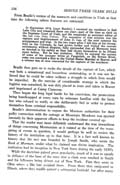
[p. 106]
From Beadle's version of the massacre and conditions in Utah at that time the following salient features are extracted:
In September 1874, [says Beadle], I resumed my residence in Salt Lake and remained there one year—part of the time as clerk on the Supreme Court of Utah, and the remainder as assistant editor of the Salt Lake Daily Tribune. The sensation of that autumn was the capture and imprisonment of John D. Lee, of the next summer his arraignment and trial. In the two years after I left him at his stronghold on the Colorado, he had grown bolder and visited the nearest settlements without disguise, fully pursuaded that all Mormons were as devoted to his safety as they had shown themselves to be fifteen years before. But he was mistaken. While he enjoyed the society of some of his younger wives at Panguitch, on the Severe River, some one conveyed a hint to the United States Marshal at Beaver, and a scheme was at once concocted for the capture of the murderer.
Beadle then goes on to recite the details of the capture of Lee, which was both a sensational and hazardous undertaking, as it was not believed that he could be taken without a struggle in which lives would be imperiled. By the exercise of considerable strategy in which the fugitive was outwitted, he was duly placed in irons and taken to Beaver and imprisoned at Camp Cameron.
Then began the long legal battle for his conviction, the prosecution being handicapped at every turn by witnesses familiar with the facts, but who refused to testify or else deliberately lied in order to protect themselves from criminal responsibility.
Beadle's determination to expose the Mormon authorities for their guilty connection with the outrage at Mountain Meadows was spurred intensely by their apparent efforts to keep the incident covered up.
That the reader may more definitely understand the true inwardness of things concerning Mormonism as it existed at the time of the transpiring of events in question, it would perhaps be well to review the history of the institution up to that time. It is a fact well known to history that the sect was founded by Joseph Smith, who wrote the Book of Mormon, under what he claimed was divine inspiration. The institution had its inception in New York State during the early 1830's.
While the doctrines gained great popularity, much of it was so openly in defiance of the laws of the state that a clash soon resulted in Smith and his followers being driven out of New York. First they went to Ohio where a like fate awaited them. From there they emigrated to Illinois, where they readily gained a substantial foothold. But after many
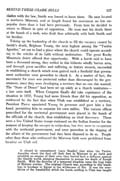
[p. 107]
clashes with the law, Smith was forced to leave there. He next located in northern Missouri, and at length found his movement no less unpopular there than it had been previously. From here he decided to return to Illinois in spite of opposition. He soon met his death there at the hands of a mob, who dealt thus arbitrarily with both Smith and his brother.
Taking up the leadership of the church to fill the vacancy caused by Smith's death, Brigham Young, the next highest among the "Twelve Apostles," set out to find a place where the church could operate according to the articles of its faith without molestation. The great Rocky Mountain desert offered that opportunity. With a horde said to have been a thousand strong, they settled in this hitherto wholly barren area, and through great sacrifice and suffering, so history records, succeeded in establishing a church which soon gained such a foothold that government authorities were powerless to check it. As a matter of fact, the movement for years was protected rather than discouraged by the government, since they were developing a territory that no one else wanted. The "State of Desert" had been set up solely as a church institution—a law unto itself. When Congress finally did take cognizance of the situation in 1850, Young had more friends than did his opposition, as evidenced by the fact that when Utah was established as a territory, President Pierce appointed Young its governor and gave him a free hand, permitting him to organize his own militia. The various offices prescribed for the territorial government were placed in the hands of the officials of the church, thus establishing an ideal theocracy. There were a few United States troops stationed on the Indian frontier for the purpose of keeping the savages in subjection, hut they were to co-operate with the territorial government, and were powerless in the shaping of the affairs of the government had they been disposed to do so. People other than those who embraced the Mormon faith were prohibited from locating on Utah soil.
It should be remembered [says Beadle] that when the Twelve Apostles shook the dust off their feet in Missouri to go forth and establish an empire of their own, they hurled back a defiance against the Gentile world, pledging themselves to avenge the death of Joseph Smith. With the doctrine of a temporal kingdom came the long train of Hebraic similes. The original Church was, according to this teaching, in bondage in Egypt in the wilderness of Zion. It was the overthrow of the Amalekites which the horde settling in Utah was taught
[p. 108]
to believe were responsible for Smith's death, and the persecution of his followers that was to be accomplished, and in the course of time would be repeated the wonderful achievement in the fruitful annals of Israel. All the bloody devices of the ancient Hebrews were legalized and through Mormonism became the terrible thing it was in Utah in 1856 and '57.The legislature in its caste divided up the territory into grants, the most valuable of the developed portions being assigned to the various dignitaries of the Church, each in turn portioned out to his laity, and thus color of title was established, the regulation governing settlement being so drastic as to make it impossible for anyone other than Morman to gain even a foothold. Governor Young is quoted as having remarked, "If there is nothing upon which the damned Gentiles can settle on, they can't settle."
Not only did the church defy the world in its monopoly of Utah, but the laity had a special grievance against the people from Missouri and Arkansas. Against the former because of the church having been driven out of that state, and the latter because one of their missionaries, who was exercising his right of celestial marriage, had been killed here for his efforts to take another man's wife.
Whether or not there is a connection between the two incidents is not clear, but about the time the information reached Washington in 1859 that a massacre of emigrants had taken place at Mountain Meadows two years previous to that time, Brigham Young was displaced by President Buchanan and a new governor was appointed, thus bringing to an end a decade of Young's tenure in that office.
It is a noteworthy fact, however, that John D. Lee and cohorts who were associated with the prosecution of the massacre remained undisturbed in their various positions, combining church and legal authorities for many years. Lee was still an active bishop in the church for fourteen years following the date of the massacre.
All lips remained so tightly sealed concerning the massacre incident that, although government authorities began working on the matter as soon as the story of the massacre gained circulation, it was around 1870 before there had been sufficient evidence gained to place the responsibility; and still all was not clear because of the conflicting stories concerning it, However, Lee had not been asleep. As soon as he learned that there had been much damaging evidence unearthed against him, he fled, taking refuge in the mountains where he expected protection and where for some time he was quite secure. But as has been previously stated, he was finally captured and brought back to face the charge
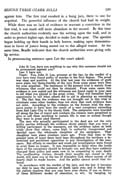
[p. 109]
against him. The first trial resulted in a hung jury, three to one for acquittal. The powerful influence of the church had had its weight.
While there was no lack of evidence to warrant a conviction in the first trial, it was made still more abundant in the second. By this time the church authorities evidently saw the writing upon the wall, and in order to protect higher-ups, decided to make Lee the goat. The apostles began holding up their hands in holy horror, making open demonstrations in favor of justice being meted out to this alleged traitor. At the same time, Beadle indicates that the church authorities were giving only lip service.
In pronouncing sentence upon Lee the court asked:
John D. Lee, have you anything to say why this sentence should not be pronounced against you?
Lee: I have not.
Court: You, John D. Lee, prisoner at the bar, by the verdict of a jury have been found guilty of murder in the first degree. The proof was clear and positive. At the trial last year the evidences of guilt were plain, but three-fourths of the jury from some cause were then for your acquittal. The testimony in the present trial is mainly from witnesses that could not then be obtained. From some cause this evidence is now sealed and the witnesses are found ready in your case to tell what you played in the great crime. They will hereafter have opportunity to tell what others did to aid in planning an executing it. The fact that the evidence was not brought out in this trial to criminate some other leaders, does not show that such evidence does not exist. According to the evidence on the former trial the massacre seems to have been the result of a vast conspiracy extending from Salt Lake to the bloody field. The emigrants were hounded all along the line of travel and nowhere the citizens were permitted to give or sell them anything to sustain life in man or animal though they were in great need thereof.
The men who actually participated in the deed are not the only guilty parties. Although the evidence shows plainly that you were a willing participant in the massacre, yet the evidence taken at both trials show that others, some high in authority inaugurated and decided upon the wholesale slaughter of the emigrants. That slaughter took place nineteen years ago. From that time to the present term of court there have been throughout the territory a determined and persistent opposition to any investigation of the massacre. But efforts to smother and crush out investigation were found to avail them no longer. It was impossible to delay when the inside facts of the conspiracy should be brought out, and they have suddenly changed their policy and seem now to be consenting to your death. The unoffending victims, though their mouths are closed to this world, will meet you at the bar of Almighty God, where secrets of all hearts shall be made known. And the guilty cannot avoid that tribunal.
In accordance with the verdict of the jury, and the law, it becomes my duty to pass the sentence of death upon you; and in doing this the statute requires that you may have your choice, if you so desire, of three different modes of execution, to wit; by hanging, by
[p. 110]
shooting or by beheading. If you have any choice or desire in this respect, you can now express it.Lee: I prefer to be shot.
Court: As you have made choice and expressed it that you be executed by being shot, it follows that such shall be the judgment of the court, that you be taken hence to the place of confinement; that you there be safely kept in confinement until Friday, the 26th of January, 1877, that between the hours of 10 o'clock a. m. and 3 o'clock p. m. of that day, you be taken from your place of confinement and in this district publicly shot until you are dead; and may Almighty God have mercy on your soul.
An appeal on Lee's conviction was taken to the Supreme Court of Utah and, in spite of underground as well as open efforts to thwart the decision of the lower court, the findings of the lower court were sustained in every detail, the decision of the judges being unanimous.
The mandate directed that a new date be fixed for the execution which was set for Friday, March 23, 1877. There was much talk of an appeal to the United States Supreme Court, but none was taken. Still Lee did not give up hope. There were mysterious hints of an understanding between him and the district attorney, by which Lee was to secure a pardon or commutation in return for evidence that would convict all the others guilty of complicity in the massacre. Lee worked hard on a confession, which he first prepared apparently upon that line, and submitted it to the district attorney, but only portions of it designed not to interfere with his plans for convicting others was ever made public. Conscious that he had been double-crossed and deserted by his friends in his greatest need, he repudiated much of a former confession he had made. He seemed to have a feeling that something would take place and deliver him from the hands of death.
At long last Lee apparently tells some truth, still shielding himself, denying any actual killing.
Appended here are the most important sections of his long drawn-out confession:
My name is John Doyle Lee. I was born September 6, 1812, in Randolph County, Ill. My Mother belonged to the Catholic Church and I was christened in that faith. My parents died while I was still a child and my boyhood was one of trial and hardship. I married Agatha Ann Woolsey in 1833 and moved to Fayette, Ill. There I became acquainted with some travelling Mormon preachers. I bought and believed in the Book of Mormon. I sold my property and moved to Far West, Mo., in 1837 where I joined the Mormon Church and became intimately acquainted with Joseph Smith, Brigham Young and other leaders in the Church of Jesus Christ of Latter-Day Saints.
[p. 111]
I was subsequently initiated into the order of Donites at its first formation. The members of this order were solemnly sworn to obey all orders of the priesthood of the Mormon Church, to do any and all things commanded. The "destroying angels" of the Mormon Church were selected from this organization. I took active part as a Mormon soldier as it was the recurring conflicts between the people which made Jackson County, Mo., historic ground. When the Mormons were expelled from Missouri, I was the first to settle in Nauvoo, Ill., where I took part in all that was done by the church or city. I had charge of the construction of many public buildings there and was the policeman and bodyguard of Joseph Smith. After his death I held the same position to Brigham Young, who succeeded Smith, as Prophet Priest and Revelator in the Church. I was recorder for the Quorum of Seventy, head clerk of the Church and organized the Priesthood of Seventy. I took all the degrees of the Endowment House and stood high in the Priesthood. I travelled extensively throughout the United States as a Mormon Missionary, and acted as trader and financial agent of the Church. From the death of Joseph Smith until the settlement at Salt Lake, I was one of the locating committee that selected sites for the various towns and cities. I held many offices in the territory and was a member of the Mormon legislature and was Probate Judge of Washington County. Immediately after Joseph Smith received a revelation concerning polygamy, I was informed of its doctrines. I believe in the doctrine and I have been sealed to eighteen women, three of whom are sisters, and one was the mother of three of my wives. I sealed to this old woman for her soul's salvation. I was an honored man in the Church, flattered and regarded by Brigham Young and the Apostles until 1868, when I was cut off from the Church and selected as a scapegoat to suffer for and bear the sins of my people. As a duty to myself and mankind, I now confess all I did at the Mountain Meadows Massacre, without animosity to anyone, shielding none, and giving the facts as they existed. Those with me at that time were acting under orders of the Church of Jesus Christ of Latter-day Saints. The horrid deed then committed was as a duty which I owed God and the Church. We were all sworn to secrecy before the massacre. The penalty for giving information concerning it was death. As I am to suffer death for what I then did and have been betrayed by both those who gave the orders to act and those who were my most active assistants, I now give the world the true facts, and tell why the massacre was committed.In the month of September, 1857, the company of emigrants known as the "Arkansas Company" arrived at Parawan on their way to California. At Parawan, Young Aden, one of the company, saw and recognized William Laney, a Mormon resident of Parawan. Aden and his father had rescued Laney from an anti-Mormon mob in Tennessee several years before and saved his life. Laney was attacked by the mob. He was a Mormon Missionary in Tennessee. Laney was glad to see his friend and benefactor, and gave him some garden sauce to take back to the camp with him.
The same evening it was reported to Bishop (Colonel) Dame that Laney had given potatoes and onions to Aden, one of the emigrants. When the report was made to Colonel Dame, he raised his hand and crooked his finger in a significant manner to one Barney Carter, his brother-in-law, and one of the "Angels of death." Carter without another word, walked out and went to Laney's house with a long picket in his hand, called Laney out and struck him a heavy blow on the head, fracturing his skull and left him on the ground for dead.
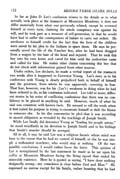
[p. 112]
So far as John D. Lee's confession relates to the details as to what actually took place at the massacre at Mountain Meadows, it does not differ materially from what was previously related, except he screened himself at every turn, claiming the whole conspiracy was against his will, and he took part as a measure of self-protection, in that he would have had to suffer the consequences of failure to carry out orders. He attributes to himself credit for the fact that the lives of the children were saved by his plea to the Indians to spare them. He says he personally saved the life of the Fancher boy, after he had been dragged from a wagon by the hair of the head and injured. That he took this boy into his own home and cared for him until the authorities came and called for him. He makes other claims concerning this boy that do not check with information gained from other sources.
Under orders, Lee declares, he made a verbal report of the massacre two weeks after it happened to Governor Young. Lee's story as to his conference with Young is clearly prejudiced both in behalf of himself and the governor, from whom he was apparently cowering in fear. That fear, however, was for his (Lee's) weakness in doing what he had been ordered to do, so his confession indicated. Lee told so many different stories in his series of conflicting confessions that there was no confidence to be placed in anything he said. However, much of what he said was consistent with known facts. He seemed to tell the truth when it best suited his purpose in trying to exonerate himself or shift the blame to someone else. In his dire extremeties he pled that it was according to sacred obligation as revealed by the teachings of Joseph Smith.
While Lee finally did denounce Young as "leading his people astray," he stood steadfastly in his devotion to Joseph Smith and to his feelings that Smith's murder should be avenged.
All in all, it may be said Lee was a religious fanatic whose mind was bent to the extent that he had no control of himself, or else he was simply a redhanded murderer, who would stop at nothing. Of the two possible conclusions, I would rather favor the latter. This opinion of Lee is strengthened by the last statement he made as he sat upon his coffin at Mountain Meadows facing the firing squad that ended his miserable existence. Here he is quoted as saying, "I have done nothing designedly wrong—my conscience is clear before God and Man." He expressed no sorrow except for his family, rather boasting that he had
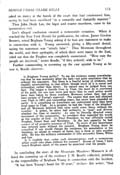
[p. 113]
asked no mercy at the hands of the court that had condemned him, saying he had been sacrificed "in a cowardly and dastardly manner."
Thus John Doyle Lee, the bigot and master murderer, came to his ignominious end.
Lee's alleged confession created a nationwide sensation. When it reached the New York Herald for publication, the editor, James Gordon Bennett, wired Brigham Young asking if he had any statement to make in connection with it. Young answered, giving a fifty-word denial, saying the statement was "utterly false." Thus Mormons throughout the world, and their apologists, of which there were many in the East, cried out that the Prophet was completely exonerated. "How easy the people are deceived," writes Beadle, "if they ardently wish to be."
Further commenting in summing up the case against Young as he saw it, Beadle observes:
Is Brigham Young guilty? To me the evidence seems overwhelming that he was accessory after the fact—not quite conclusive that he ordered the massacre. But there is a fearful array of evidence, and steadily accumulating, to that effect, though much of it is moral and inferential, rather than direct. Its nature may be judged from one fact. The longer a Gentile lives in Utah, the more he is convinced of his guilt, for one sees more and more that no such action would have been taken by those southern Mormons unless they had not been certain of Young's approval. The empire that men had obtained over Utah in 1857, and succeeding years, has never been exceeded on earth. It is something no Americans can understand until they have lived years in Utah. As a prophet, he had the "keys of the kingdom" and all Mormons believed that none could enter there without his voucher. A priest, he alone had authority to "seal" and divorce whether for time or eternity. As seer he literally directed every movement of the community. As revelator they regarded his words as the oracles of God. As First President, he was officially styled Prophet, Priest Seer and Revelator. In the last capacity he had control of all property concerns of Utah. No move of any importance was entered upon without his consent. Brigham Young must be consulted if one would change his residence, his association or his business, go ahead or remain at home, buy a farm or take another wife. He was the military commander of (the accuseds) Dame, White and Lee.
Is it credible that, under such circumstances, such a momentous affair could take place without his consent? Scores of times I have heard Brigham speak of the power he exercised over his people.
In concluding the story of the Mountain Meadows Massacre is offered the summing up of the evidence J. H. Beadle collected, pointing to the responsibility of Brigham Young in connection with the incident.
"It has been Young's boast for 30 years." declare this writer, "that
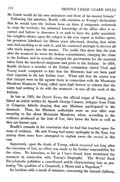
[p. 114]
the Saints would do his own utterances and those of his nearest friends."
Following this assertion, Beadle calls attention to Young's declaration that he would turn the Indians loose on them if emigrants undertook to cross the territory; his admitted knowledge of the affair after it occurred and failure to denounce it or seek to have the guilty punished; his complete silence upon the subject in his next report as Indian agent; his persistent falsehood for fifteen years afterward, denying that white men had anything to do with it; and his continued attempts to deceive all who made inquiry into the matter. The public files show that the year after the massacre he wrote the Indian commissioner, charging the crime to the Indians, and he actually charged the government for the material taken from the murdered emigrants and given to the Indians. In 1864, Beadle declares a member of the Indian commission visited Utah and Young made complaint to him that the Mormons had not been paid their expenses in the late Indian wars. When told that the reason was that charges were on file against them in connection with the Mountain Meadows Massacre, Young called upon high heaven to witness that the saints had nothing to do with the massacre—it was all the work of the Indians.
As late as 1869, the Desert News, the official organ of Young, published an article written by Apostle George Cannon, delegate from Utah in Congress, bitterly denying that any Mormon participated in the massacre. Thus, the Mormon authorities went on year after year swearing to lies about Mountain Meadows, when, according to the evidence produced at the trial of Lee, they knew the facts as well as they are known now.
Beadle's remarks in his conclusion that he had but touched upon the mass of evidence. He said Young had many apologists in the East, but among them none have attempted to explain away the record in this case.
Apparently, upon the death of Young, which occurred not long after the execution of Lee, no effort was made to fix further responsibility for the crime. No historians, so far as I have found, have mentioned the massacre in connection with Young's biography. The World Book Encyclopedia publishes a contributed article characterizing him as possessing "the qualities of a Cromwell, a Moses and a Napoleon."
An incident with a touch of romance, concerning the rescued children,
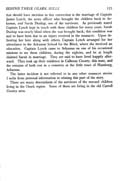
[p. 115]
that should have mention in this connection is the marriage of Captain James Lynch, the army officer who brought the children back to Arkansas, and Sarah Dunlap, one of the survivors. As previously stated Captain Lynch kept in touch with these children for many years. Sarah Dunlap was nearly blind when she was brought back; this condition was said to have been due to an injury received in the massacre. Upon delivering her here along with others, Captain Lynch arranged for her attendance in the Arkansas School for the Blind, where she received an education. Captain Lynch came to Arkansas on one of his occasional missions to see these children, during the eighties, and he at length claimed Sarah in marriage. They are said to have lived happily afterward. They took up their residence in Calhoun County, this state, and the remains of both rest in a cemetery at the little town of Hamburg, Arkansas.
The latter incident is not referred to in any other massacre stories. I write from personal information in relating this part of the story.
There are many descendants of the survivors of the rescued children living in the Ozark region. Some of them are living in the old Carroll County area.
